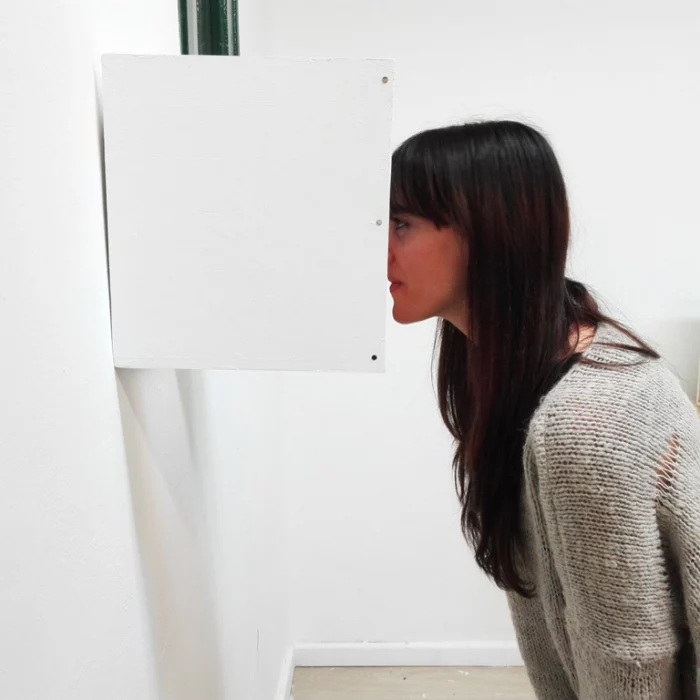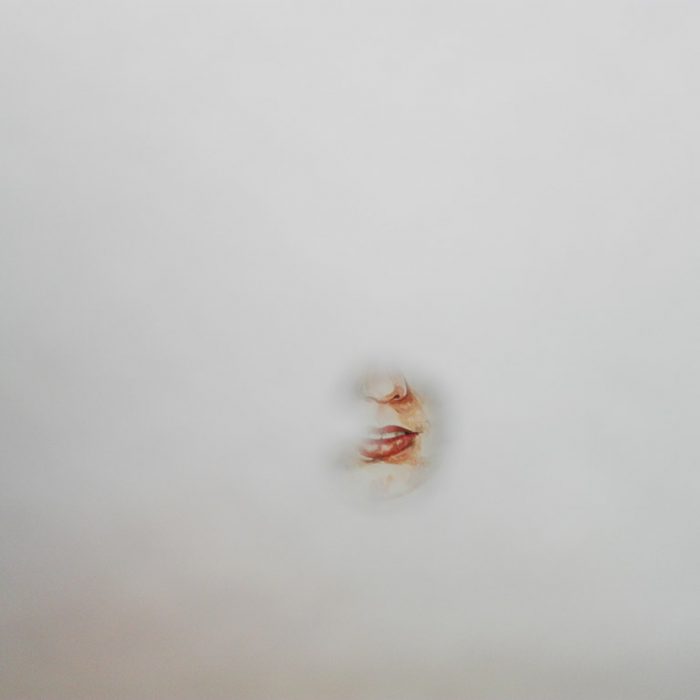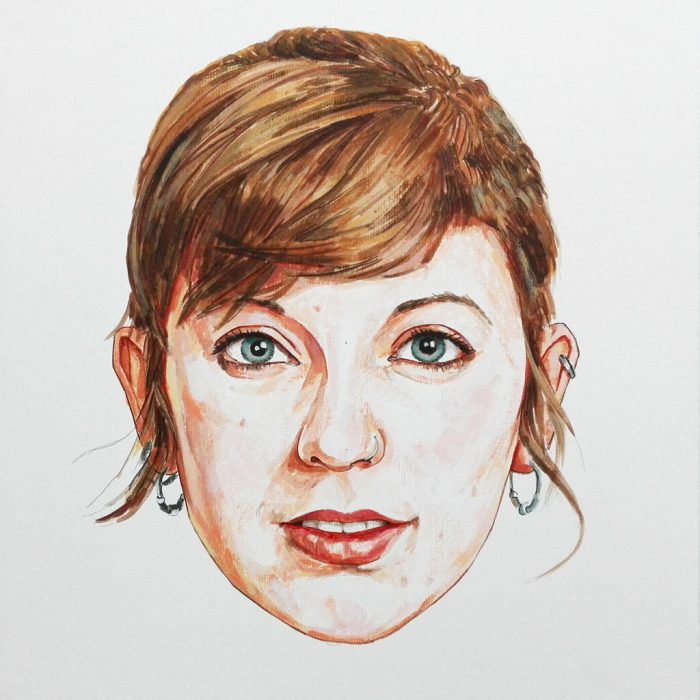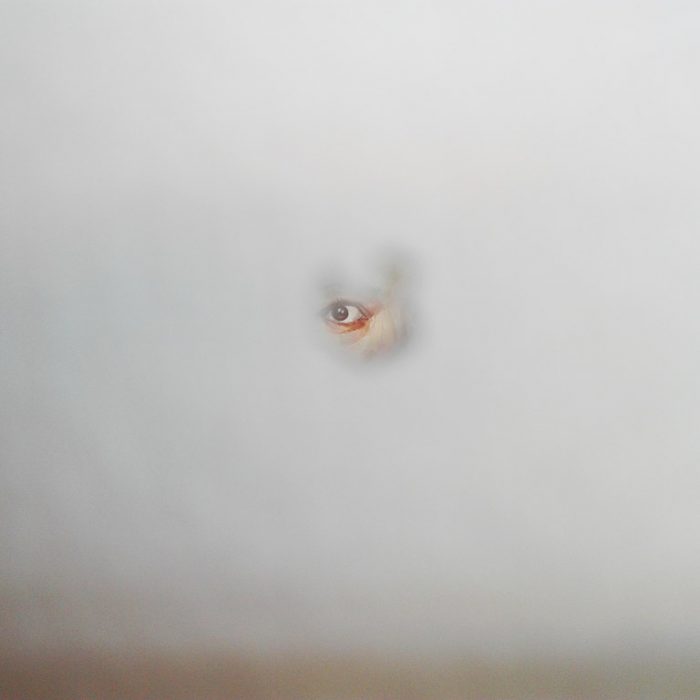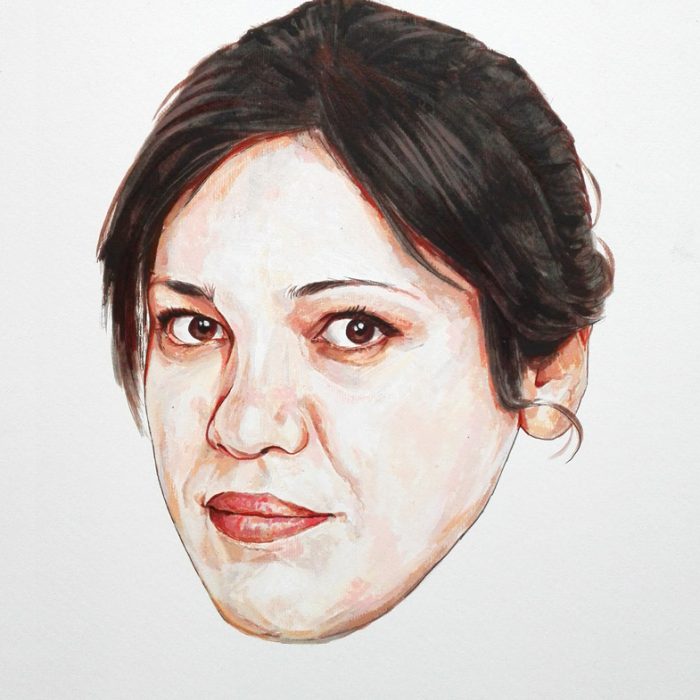The installation created by María Bisbal explores the concept of interdependence, understood as the dynamic of mutual responsibility and the need to share common principles with others. This reflection is centred on a pressing contemporary issue: gender-based violence.
To address this theme, the artist has collaborated with the Asociación de Mujeres contra el Maltrato (MUM – Women Against Abuse Association). The involvement of these women, whose lives have been marked by experiences of violence, poses the challenge of representing faces that do not wish to, must not, or cannot be shown in a conventional way.
Installation consisting of two pieces, each made up of a three-sided wooden board cube, mirror, painted portrait, and acrylic marker on paper. Fabriano “Pittura” 400 g/m² paper mounted on wooden stretcher.
Total installation size: 126 × 35 × 28 cm.
The strength of this context — and the uniqueness of the experiences of those who inhabit it — demands a rethinking of traditional languages of representation. The work thus becomes not only an aesthetic proposal, but also an ethical and political gesture that opens space for new forms of visibility.
The piece consists of two portraits, each housed within a four-sided cube. These images remain hidden and can only be seen through two small openings. As in Marcel Duchamp’s Étant donnés, this device creates a desire to overcome the constructed system of concealment and access what lies veiled. Looking inside the boxes, our gaze aligns with the pupils of the portrayed figure; through the reflection in a mirror — which introduces a sense of estrangement and a pause for reflection — we come to see ourselves as bearers of their face.
This experience creates a space for intimate dialogue, where seeing and being seen merge into a single act. We are no longer mere spectators observing from a distance, but rather engaged subjects who individually confront the unpresentable and unrepresentable nature of gender-based violence.
In resonance with certain works by Chilean artist Alfredo Jaar, this project challenges traditional systems of representation. The image is not delivered immediately, but through a mediated and indirect form of reception. This displacement allows the viewer to intuit an invisible violence — one that images produced within conventional public languages are incapable of revealing, precisely because those same languages are both the generators and silencers of what they depict.
Yet the viewer’s participation does not end with visual experience. The perceptual realm shifts into the domain of language when, upon completing the installation, visitors are invited to construct a narrative that bears witness to what they have experienced for those who have not. At this point, a fundamental question arises: how do we narrate to others what we have seen? In the attempt to formulate this narrative, we come to realise that conventional language and established syntax fall short in expressing the intensity of a traumatic event. Thus, the creation of new languages — of alternative pathways beyond historically imposed codes — becomes necessary, enabling spaces of care, visibility, and awareness.
